The North Dakota capitol is one of two skyscraper capitals in the country. The other is in Baton Rouge, LA.
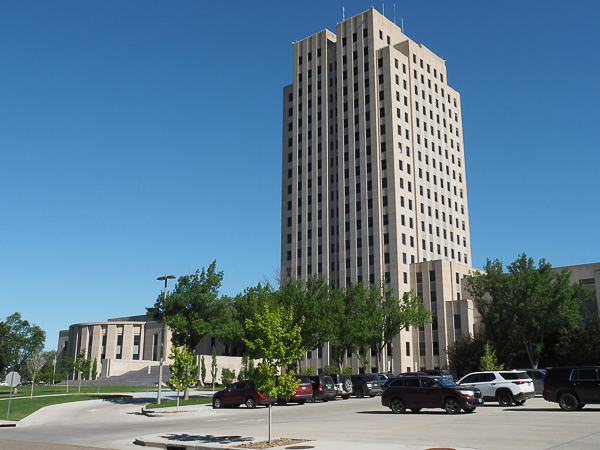
No domes here!
When the old capitol building burned in the '30s, the legislature decided that they wanted to get the most effective office building for use rather than spend the money on expensive frippery like domes.
Building the new capitol was funded in part by selling some of the land used by the old capitol complex. Fewer auxiliary buildings were needed to hold offices.
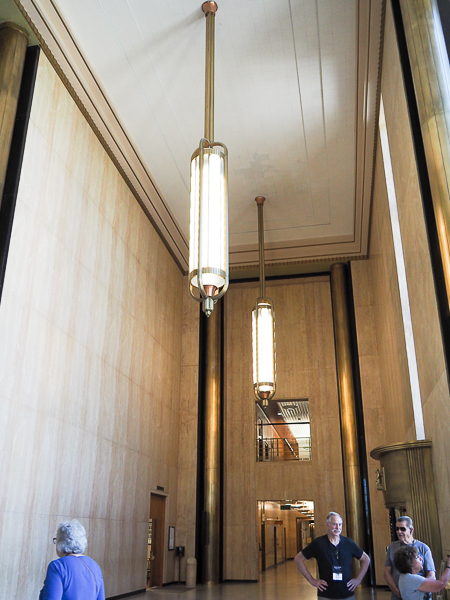
Although expenses were kept to a minimum, there is nothing mean about the building -- it is magnificent! This is a view of the Memorial Hall.
The chandeliers represent stylized heads of wheat. ND is the #1 producer of wheat in the US.
The walls are travertine marble from Montana.
The bronze columns, in addition to being decorative, are conduits for the HVAC and electrical systems.
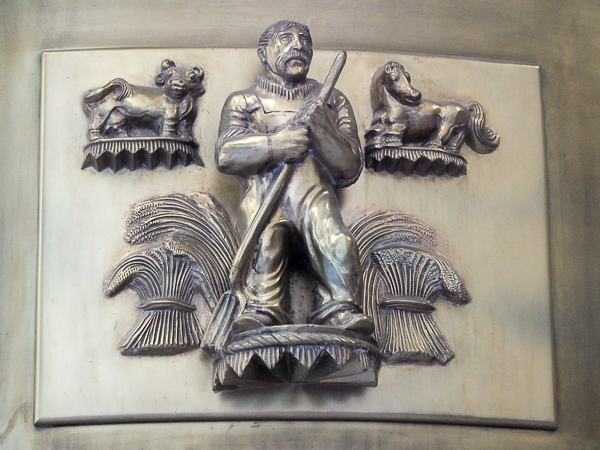
Above the two former main entrance doors to the hall (closed to provide increased security), are designs highlighting ND's main industries at the time: coal mining and agriculture.
Oil and gas extraction is still the #1 industry by revenue.
Agriculture, represented by this design, is still #2.
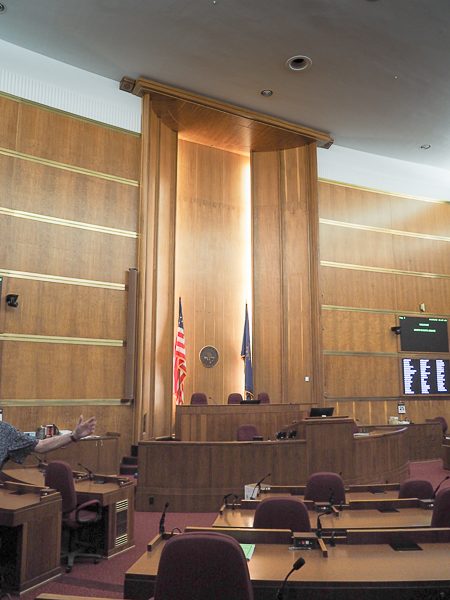
The senate chamber.
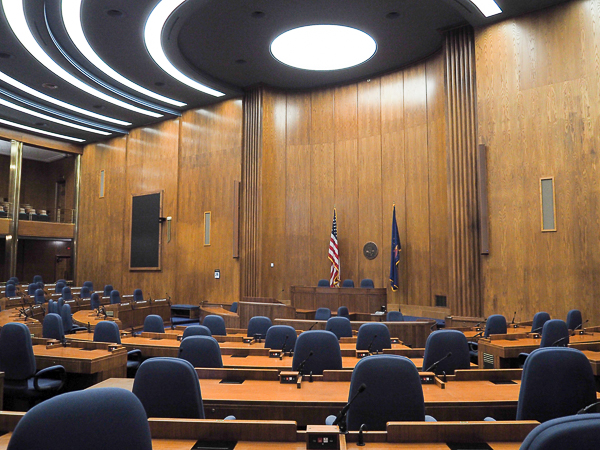
And the House of Representatives.
Since almost a third of the population of North Dakota is concentrated in the two largest cities, Fargo & Bismarck, representatives are chosen by area in order to give the less populated parts of the state a voice.
Our guide told us a funny story about the ceiling lights. He was taking a group of school children through and overheard one youngster point out to another: Look they have WiFi!
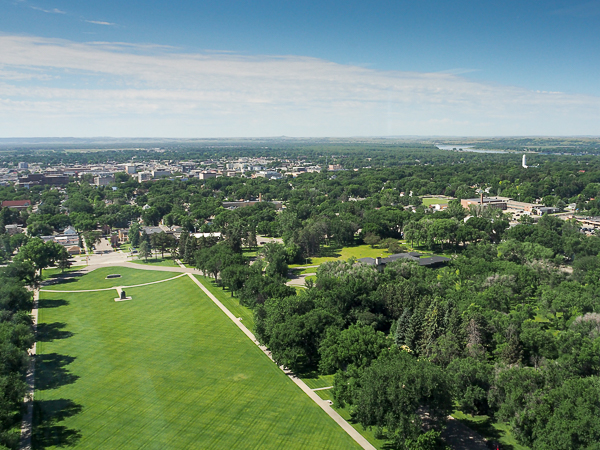
We enjoyed the 360° view from the observation floor.
The Missouri River is in the background.
The mall at the foot of the capitol was the site of the Guinness Book of World Records title for the most snow angels: 8,962! The mall was entirely covered.
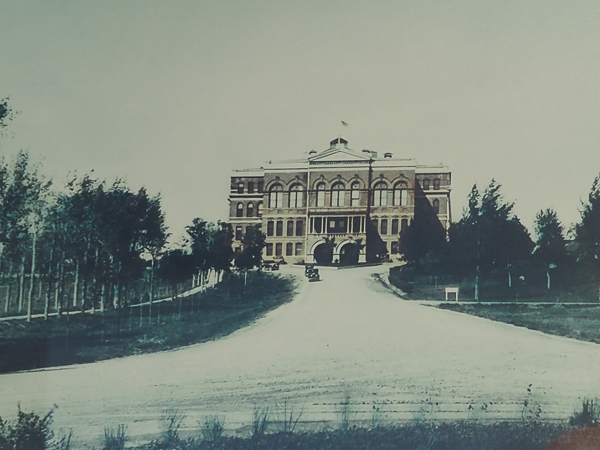
There were numerous historical photos around the observation deck including this one of the old capitol that burned.
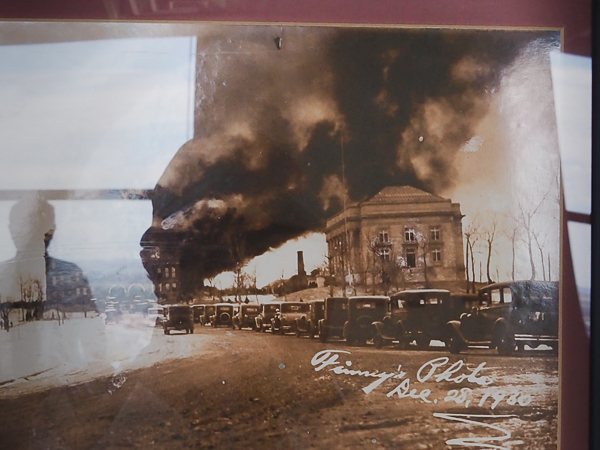
And a picture of the fire that destroyed it in December, 1930.
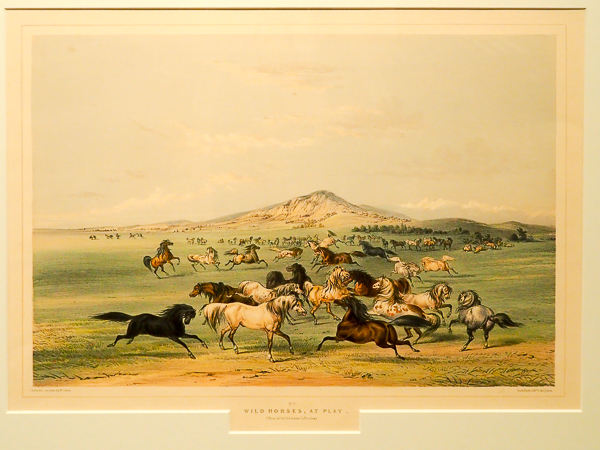
There was also a gallery of George Catlin prints of Western scenes of the 1840s. This one is titled "Wild Horses at Play."
Catlin followed the conventions of his day in making the heads smaller and more refined than they actually were. He commented in his description, however, that the animals were "delicate of limb" and emphasized the variety of colors.
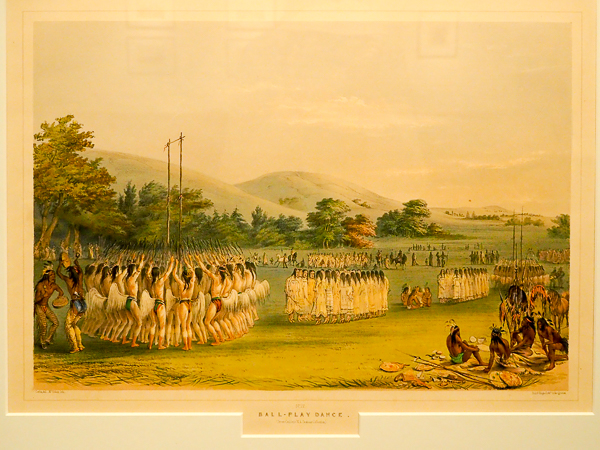 "Ball-play Dance" reminds me of a reproduction we saw of the
Rite of
Spring with the original choreography and costumes. The same circles
of men and women with the women dancing on tip-toe.
"Ball-play Dance" reminds me of a reproduction we saw of the
Rite of
Spring with the original choreography and costumes. The same circles
of men and women with the women dancing on tip-toe. Click your "back" button to return to the previous page or click for our picture album.